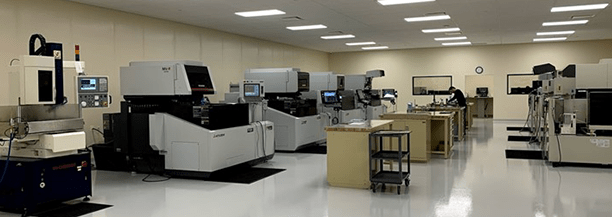Full article in Modern Machine Shop, July 2020 edition. Written by Emily Probst, Senior Editor.
“Becoming a tool and die maker is like driving a car — you don’t start out as a racecar driver. It takes a while to get there,” says Neil Dohe. “You have to get a feel for what you’re doing, and that only comes with years of experience.”
In making this analogy, Mr. Dohe, who is the operations and sales manager at Dies Plus, a division of Otto Engineering, does not mean to imply a hierarchy between machinists and tool and die makers. Instead, his point is that a tool and die maker usually has a very specific skillset — one that includes the experience necessary to understand the “why” behind every cut that is made and how it translates to fitting the die components together during final assembly.
…
Using machinists to make die components and integrating two separate companies into one have been major shifts for Otto’s business and employees. And these shifts are still ongoing. For example, Otto’s new tech center has two toolrooms — one room supports large dies up to 440 tons and the other supports high speed, smaller presses.
The EDM area in the Dies Plus division is notable. Not only is it impeccably clean (as is the entire facility), but there are seven new Mitsubishi EDMs here — significant capacity. Moreover, a central chilling system keeps the room’s temperature consistent and keeps the machines to a tight window of precision. The company worked with Mitsubishi to customize a heat exchanger on each machine, so all cooling now goes through the walls to the central chilling system.
In this EDM area, Dies Plus is taking the next steps in systemizing die making by moving toward a paperless process in which it gets rid of job travelers. Instead, information is engraved directly on each burn block — the nested set of EDMed components for a given die that gets machining such as hole making before blocks are EDMed out (see photo). According to Mr. Dohe, engraving each burn block with specific information to that part connects the nested set of components to digital information about that die, reducing paper.
The EDM process for these burn blocks is monitored remotely using MC Machinery’s remote360. Using this production monitoring and support system, employees can be away from the machines yet still see how the EDMs are progressing with green, yellow, and red charts. The web-based application provides real-time data that enables employees to see uptimes/downtimes and when each machine has open capacity for a new job. One of the dashboards enables Mr. Dohe to see the percentage of job completion, the amount of wire remaining, the program number, the runtime, and the material being cut on each EDM. Remote360 gives him the extra information necessary to keep the machines running longer. It even lets him see when machine maintenance will be needed in the future. “We can see ahead with remote360 and plan things out instead of waiting until something is finished, or when immediate action needs to occur,” he says. In the EDM area, two preset stations in combination with machine monitoring have helped improve uptime by roughly 25%, he says.

